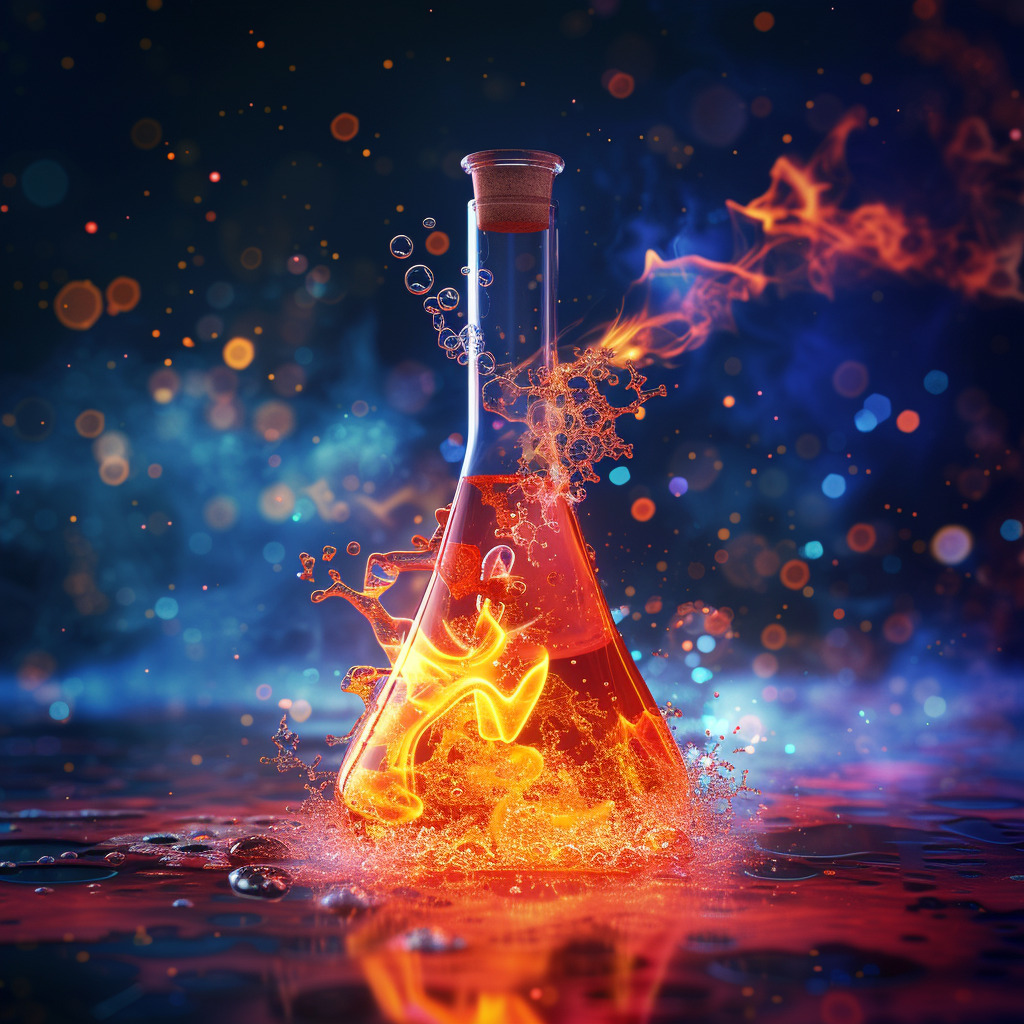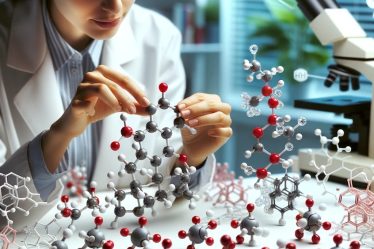
Let’s take a moment to talk about entropy, a concept in chemistry that often sounds intimidating but is incredibly fascinating once you get to know it.
Think of entropy as the science world’s way of explaining why certain things happen the way they do, like why ice melts into water or mixing your morning coffee ends up in a blend rather than remaining separate layers of milk and coffee.
Entropy and Laws of Thermodynamics: Key Takeaways
In a hurry? Don’t worry. Our critical takeaways on entropy, enthalpy, and thermodynamics will give you a quick and easy summary of the main points:
🟠 Entropy: Entropy measures the disorder or randomness of a system. It explains why chemical reactions occur and how energy moves in the processes we observe every day.
🟠 The Laws of Thermodynamics: Thermodynamics law, especially the second one, tells us that entropy in the universe is constantly increasing, making it a fundamental truth in studying physical and chemical changes.
🟠 Gibbs Free Energy: Standard free energy marries entropy with another essential idea, enthalpy, to determine whether a reaction can happen spontaneously.
If you find entropy and enthalpy challenging, don’t worry! Personalized tutoring or interactive chemistry lessons make thermodynamics more straightforward. Explore more chemistry topics and broaden your knowledge with our free World of Chemistry blogs.
What is Entropy, and Why is it Important?
At its essence, entropy measures the randomness in a system. But why does this matter? Entropy is vital to understanding how processes evolve, especially in chemistry, where it helps explain why reactions happen the way they do.
The Definition of Entropy and its Units
Entropy, symbolized as S, is defined as the measure of disorder in a system—the more ways a system can be arranged without changing its overall energy, the higher its entropy. In the International System of Units (SI), entropy is measured in joules per kelvin (J/K). This unit reflects entropy’s role as a bridge between energy (joules) and temperature (kelvin), illustrating how energy disperses within a system at a given temperature.
The Second Law of Thermodynamics and the Increase of Entropy
The Second Law of Thermodynamics states that the total entropy of an isolated system can never decrease over time; it can only stay constant or increase. This law underpins the direction of natural processes, ensuring they move towards more significant disorder or entropy. It explains why certain reactions are spontaneous, driving towards equilibrium where entropy is maximal. This law is a fundamental principle for understanding the irreversible nature of most natural processes, from the mixing of gases to the heat flow from hot to cold objects.
The Relationship between Entropy and Temperature
The relationship between entropy and temperature is crucial in thermodynamics. Generally, as the temperature of a system increases, so does its entropy. This increase is due to the greater energy available at higher temperatures, allowing particles within a system to move more freely and occupy more possible states, thus increasing disorder. This relationship is evident in phase transitions, such as melting or boiling, where a significant increase in entropy occurs.
Are you finding entropy and laws of thermodynamics tricky? A chemistry tutor can provide personalized lessons tailored to your needs, making organic and inorganic chemistry understandable and enjoyable.
How to Calculate Entropy Changes in Chemical Reactions
The Entropy Formula and How to Use It
To calculate entropy changes in chemical reactions, we use the formula:
ΔS = S_final – S_initial
ΔS represents the change in entropy, S_final is the entropy of the products, and S_initial is the entropy of the reactants.
Entropy calculation helps determine if a reaction leads to more or less disorder. For example, when solids turn into gases, the entropy increases because gases are more disordered than solids. You can find entropy values for specific substances in chemistry reference materials.
The Factors that Affect Entropy Changes in Reactions
Several factors influence entropy changes in chemical reactions, including temperature, pressure, phase changes, and molecular complexity:
- Temperature: An increase in temperature generally leads to higher entropy because particles can move more freely and occupy more states.
- Pressure: Reducing pressure increases entropy, especially in gases, by allowing particles to spread out more.
- Phase Changes: Transitioning from solid to liquid or gas increases entropy due to the less ordered nature of the latter phases.
- Molecular Complexity: More complex molecules have higher entropy because of the greater number of ways their atoms can be arranged.
Examples of Entropy Calculations for Different Types of Reactions
- Melting of Ice to Water: The change from ice H₂O(s) to water H₂O(l) represents an increase in entropy (positive ΔS).
- Combustion of Methane: Combusting methane (CH₄ + 2O₂ → CO₂ + 2H₂O) increases the system’s entropy, also indicated by a positive ΔS.
Table: Entropy Changes for Different Reactions
| Reaction Type | Reaction Equation | Initial Entropy | Final Entropy | Entropy Change (ΔS) |
| Melting | H₂O(s) -> H₂O(l) | Low | Higher | Positive |
| Combustion | CH₄ + 2O₂ → CO₂ + 2H₂O | Moderate | High | Positive |
| Synthesis | 2H₂ + O₂ → 2H₂O | High | Lower | Negative |
| Decomposition | 2HgO(s) → 2Hg(l) + O₂ | Lower | High | Positive |
Anyone curious about chemistry in daily life can explore simple experiments or consult a chemistry tutor to discover more about the science behind these everyday phenomena.
How Entropy Affects the Spontaneity and Feasibility of Reactions
Entropy significantly influences whether a reaction is spontaneous, helping predict outcomes. Don’t forget to learn about electronic configuration.
The Concept of Gibbs Free Energy and How to Calculate It
Gibbs free energy combines entropy and enthalpy to predict reaction spontaneity. The formula for Gibbs free energy is:
G = H – T*S
G is Gibbs free energy, H is enthalpy, T is temperature in kelvins, and S is entropy.
A negative G indicates a spontaneous reaction, whereas a positive G suggests a non-spontaneous reaction. This calculation is crucial for understanding the balance between energy release or absorption and disorder increase within a reaction.
The Criteria for Spontaneous and Non-Spontaneous Reactions Based on Free Energy
The spontaneity of a reaction depends on the changes in enthalpy (ΔH) and entropy (ΔS), along with the temperature (T). Rules for predicting spontaneity include:
- A reaction is likely spontaneous if ΔH is negative (releasing energy) and ΔS is positive (increasing disorder).
- A reaction is non-spontaneous if ΔH is positive (absorbing energy) and ΔS is negative (decreasing disorder).
- Temperature determines spontaneity when ΔH and ΔS have opposite effects; high temperatures favor reactions with positive ΔH and ΔS, and low temperatures favor reactions with negative ΔH and ΔS.
Table: Relationship Between Changes for Different Reaction Types
| Reaction Type | ΔH | ΔS | ΔG | Spontaneity Condition |
| Exothermic, Increasing Disorder | – | + | Negative | Spontaneous at all T |
| Endothermic, Decreasing Disorder | + | – | Positive | Non-spontaneous at all T |
| Endothermic, Increasing Disorder | + | + | Negative at high T | Spontaneous at high T |
| Exothermic, Decreasing Disorder | – | – | Negative at low T | Spontaneous at low T |
Read all about the polymerase chain reaction or PCR.
Examples of Spontaneous and Non-Spontaneous Reactions and Their Entropy Changes
An increase in entropy often marks spontaneous reactions. For example, ice melting into water occurs without needing energy input, showcasing an increase in disorder as solid water transitions to a more disordered liquid state, thus increasing entropy.
On the other hand, the synthesis of ammonia from nitrogen and hydrogen gas under high pressure and temperature is a non-spontaneous reaction. It requires energy input to proceed, moving towards a lower entropy state as gases combine to form a more ordered liquid. These examples illustrate how entropy changes can signal whether a reaction will proceed spontaneously or require external forces to occur.
Suppose you’re on the lookout for a chemistry tutor. In that case, a simple search like “organic chemistry tutor Liverpool” or “inorganic chemistry teacher Edinburgh” on platforms like meet’n’learn can help you find the right private teacher for your needs.
Those who prefer group learning environments can easily find chemistry classes nearby by searching for “chemistry classes Leeds” or “chemistry lessons London” online, leading to local schools or educational centers.
How Entropy Relates to Other Thermodynamic Concepts
Entropy is a critical concept in thermodynamics, connecting deeply with other principles that explain energy and matter interactions. It helps us understand the behavior of systems, from the energy they contain to how they reach stability.
Introduction to proteins, amino acids, peptide bonds, and enzymes.
The Difference between Entropy and Enthalpy
Entropy and enthalpy are fundamental thermodynamic quantities but serve different purposes. Entropy (S) measures a system’s disorder or randomness, focusing on the distribution of energy states. Enthalpy (H), on the other hand, measures the total heat content of a system, reflecting the energy needed to create a system and the work required to make space for it.
While entropy gauges the disorder and potential for dispersal in a system, enthalpy accounts for the energy changes, mainly heat exchange with the surroundings. Together, they provide a comprehensive view of a system’s energy dynamics.
The First Law of Thermodynamics and the Conservation of Energy
The First Law of Thermodynamics, also known as the law of energy conservation, states that energy cannot be created or destroyed; it can only be transformed or transferred. This principle underpins the concept of enthalpy, which tracks the heat exchange in chemical reactions. The first law of thermodynamics ensures that the total energy in an isolated system remains constant, though it can change forms, such as chemical, thermal, or kinetic energy.
The Zeroth Law of Thermodynamics and the Equilibrium State
The Zeroth Law of Thermodynamics establishes the concept of temperature and thermal equilibrium. It states that if two systems are each in thermal equilibrium with a third system, they are also in equilibrium. The zeroth law of thermodynamics is fundamental for meaningfully defining temperature, which is crucial for understanding entropy. Entropy increases as temperature increases, leading to a more disordered state.
The Third Law of Thermodynamics and the Absolute Entropy
The Third Law of Thermodynamics posits that the entropy of a perfect crystal at absolute zero (0 Kelvin) is precisely zero. The 3rd law of thermodynamics introduces the concept of absolute entropy, providing a reference point for measuring the entropy of any system. It implies that as the temperature approaches absolute zero, the system’s disorder decreases to a minimum, as its particles occupy the lowest energy state with only one possible configuration.
Learn about chromatography and solutions and mixtures.
How to Learn About the Entropy and Thermodynamics
Exploring entropy has allowed us to understand its impact on chemical reactions, including calculations and the effects of temperature, pressure, and phase changes. To determine reaction spontaneity, we’ve linked entropy with enthalpy, Gibbs free energy, and thermodynamics laws. If you want to handle these topics better, work through examples, tackle practical problems, and apply these principles.
Are you struggling to grasp entropy, enthalpy, and thermodynamics? An organic chemistry tutor or hands-on biochemistry lessons can make a big difference in turning these complex ideas into something you can easily understand and use.
Entropy and Thermodynamics: Frequently Asked Questions
1. What is entropy, and how is it measured?
Entropy is how much disorder a system has. We measure it in joules per kelvin (J/K) with a formula S = k ln Ω.
2. What is the second law of thermodynamics, and what does it say about entropy?
The second law is that entropy always increases in an isolated system. It means that natural processes make things more disorderly and irreversible.
3. What is the relationship between entropy and temperature?
Entropy and temperature are both related to molecular motion. Higher temperature means more motion and more entropy. However, the rate of entropy change depends on the heat capacity of the system.
4. How do you calculate the entropy change of a chemical reaction?
You need to know the standard entropy values of the reactants and products. The entropy change is the difference between the sum of the products’ entropy and the sum of the reactants’ entropy.
5. What factors affect the entropy change of a chemical reaction?
Some factors are temperature, pressure, phase, and molecular complexity. Generally, entropy increases when temperature increases, pressure decreases, phase changes from solid to liquid to gas, and molecular complexity increases.
6. What is Gibbs’ free energy, and how does it relate to entropy?
Gibbs free energy is the amount of useful work a system can do at constant temperature and pressure. It is related to entropy by the equation G = H – TS, where G is the free energy, H is the enthalpy, T is the temperature, and S is the entropy.
How to make soap at home?
References:
1. Britannica
2. ChemTalk
3. Wikipedia



